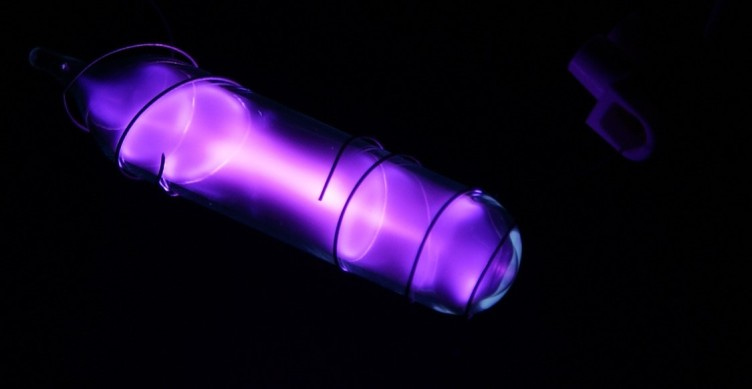Part 5: NOx and the Availability of Nitrogen
Series 1, previously published on LinkedIn, January 10, 2023
In Part 4, I mentioned that in terms of GWP (Greenhouse Warming Potential), the role of NOx is ambiguous. So let me elaborate on why I say that, first discussing a recent paper and then saying something about what the IPCC say about NOx.
Atmospheric Methane Correlated to Reduced NOx
An article published in Nature during December 2022, ‘Wetland emission and atmospheric sink changes explain methane growth in 2020’ (Shushi Peng, Xin Lin, et al. ), identifies two reasons to explain why methane (CH4) increased in the atmosphere during the COVID 19 lock-down in 2020.
One factor was elevated biogenic methane emissions due to warmer conditions in the northern hemisphere. This incidentally, provides another example of how positive feedback works to escalate average global temperature rise. The other contribution was more surprising, the reduction in vehicle emissions, which is what we need to look at next.
Natural gas (CH4) is a more potent greenhouse gas than carbon dioxide (CO2) but it also decomposes faster than CO2, because it reacts with hydroxyl radicals (OH) in the atmosphere to produce water (H2O) plus some minor CO2. These radicals are by-products of reactions between carbon monoxide (CO) and NOx, i.e. fossil fuel combustion. NOx actually degrades CH4 and reduces its residency in the atmosphere.
Without wishing to make any case for net benefits, if hydrogen NOx can help mop up CO and produce OH, the very least we can say is that given the choice, hydrogen NOx is better than fossil fuel NOx in terms of what accompanies its production.
This paper is likely to be controversial, but if you know the literature, you will recognise this is not as radical as it may seem.
NOx and the Climate Cooling Effect?
For many years, the IPCC have been undecided on whether the net effect of NOx on the climate, is warming or cooling. They way it influences Radiative Forcing (RF) is complex and confounded. However, some of the IPCC reports have been less ambivalent, viz.
In addition, emissions of CO are virtually certain to have had a positive RF, while emissions of NOX are likely to have had a net negative RF at the global scale.
Myhre, G., D. Shindell, F.-M. Bréon, W. Collins, J. Fuglestvedt, J. Huang, D. Koch, J.-F. Lamarque, D. Lee, B. Mendoza, T. Nakajima, A. Robock, G. Stephens, T. Takemura and H. Zhang, 2013: Anthropogenic and Natural Radiative Forcing. In: Climate Change 2013: The Physical Science Basis. Contribution of Working Group I to the Fifth Assessment Report of the Intergovernmental Panel on Climate Change [Stocker, T.F., D. Qin, G.-K. Plattner, M. Tignor, S.K. Allen, J. Boschung, A. Nauels, Y. Xia, V. Bex and P.M. Midgley (eds.)]. Cambridge University Press, Cambridge, United Kingdom and New York, NY, USA.
So this goes some way to explain why the NOx species of compounds have not been given a GWP rating.
NOx is Noxious
Irrespective of its net contribution to radiative forcing, it would be wrong to trivialise the impact of NOx as a pollutant, or serious threat to public health. Fortunately in the case of hydrogen, there are fewer ways to produce it than with hydrocarbons and more ways to eliminate it (which I hope to discuss in a future post beyond this series).
Any unmitigated hydrocarbon combustion process can produce NOx. Where this happens, the amount created is determined by fuel’s chemical composition (the presence of nitrogen and its compounds) plus other parameters such as temperature and fuel/air ratio. One way to think about this is to consider how nitrogen is made available to the thermal process. I will briefly discuss the three main mechanisms here noting that there are others.
Zeldovich or Thermal NOx
In the case of Thermal Nox, the Nitrogen component comes from the air during combustion. Like fossil fuels hydrogen can produce thermal NOx if combusted in air. Apart from the availability of nitrogen, thermal NOx is dependent on three factors, the temperature, the pressure and the residency in the combustion region, the last one being because the oxidation of nitrogen takes a minimum time for a given temperature.
Reducing pressure and residency will make conditions marginally less favourable to NOx formation, but the most dominant influence is temperature (hence ‘thermal NOx’) because its relationship with NOx production is exponential.
Fenimore or Prompt NOx
Prompt NOx occurs immediately after combustion of hydrocarbons in the flame-front over very short time-scales and is sometimes known as flame-generated NOx and can be accompanied by free nitrogen, oxygen, hydrogen, hydrogen cyanide (prussic acid), hydroxide and carbon monoxide. These formations require carbon so prompt NOx does not occur in uncontaminated hydrogen combustion.
Fuel NOx
Hydrogen is not subject to fuel NOx, because here, the nitrogen is acquired from the fuel itself, so the mechanism is limited to liquid and solid fossil fuels that contain nitrogen or its compounds.
The NOx Transition
We have a much better prospect of eliminating NOx via hydrogen. This might cause some to ask the reasonable question, ‘why have it at all, why not just electrify?’ Let's set aside the important rationale for using hydrogen as a means to buffer renewable generation because that is for another series of posts. The answer I would offer to the immediate question is that the energy transition cannot simply occur on the supply side, and if consumer choice is overly restricted, there will be even greater transition inertia to overcome. Also, hydrogen is not merely a transitional feedstock, it is also an enabler of other transitions, which I will discuss elsewhere.
Finally
Creating the demand for hydrogen technology will help create the market. The thermodynamic and economic cases are discussed in Series 2, consisting of four articles. I will serialise my own review of the ARUP+ QRA later in the year.
In Parts 5 to 11 I offer a rebuttal of the remaining safety claims made in the Hydrogen Insight article.




